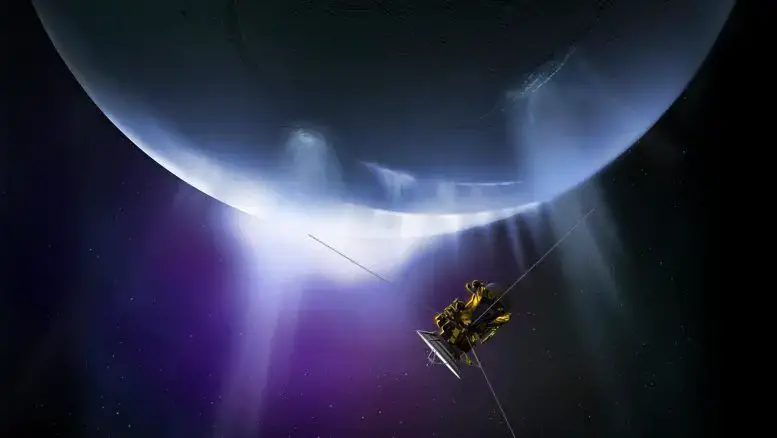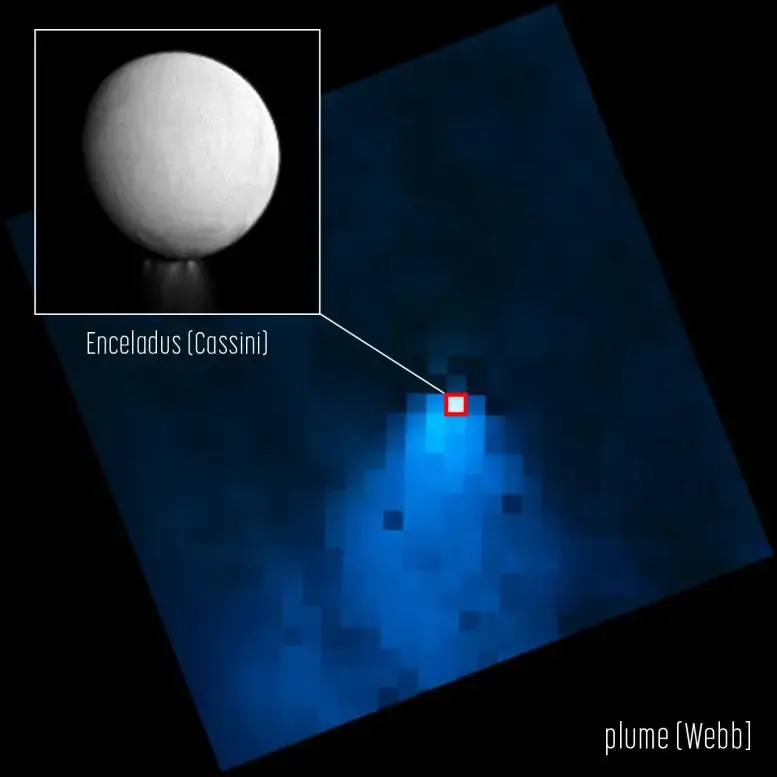Artist’s impression of the Cassini spacecraft flying through plumes erupting from the south pole of Saturn’s moon Enceladus. These plumes are much like geysers and expel a combination of water vapor, ice grains, salts, methane, and other organic molecules. Credit: NASA/JPL-Caltech

The Axiom Space Mission 2 Crew return to Earth …
Discussing unidentified anomalous phenomena …
And a water plume off of Saturn’s moon, Enceladus …
A few of the stories to tell you about – This Week at NASA!
Axiom Mission 2 Crew Returns to Earth
On May 30, a SpaceX Dragon spacecraft undocked from the International Space Station and returned to Earth with the Axiom Mission 2 crew. The four-person crew, commanded by former NASA astronaut Peggy Whitson, is the second all private astronaut crew to the International Space Station. The SpaceX Dragon returned to Earth with more than 300 pounds of cargo and data from scientific experiments conducted on the space station.

NASA held a public meeting on May 31, 2023, of its independent study team on categorizing and evaluating data of unidentified anomalous phenomena (UAP).
NASA Holds Public Meeting on Unidentified Anomalous Phenomena
NASA held a public meeting of its independent study team on categorizing and evaluating data of unidentified anomalous phenomena, or UAPs. Observations of events in the sky that cannot be identified as aircraft or as known natural phenomena are categorized as UAPs. The independent study team will publish a public report this summer.

An image from NASA’s James Webb Space Telescope’s NIRSpec (Near-Infrared Spectrograph) shows a water vapor plume jetting from the southern pole of Saturn’s moon Enceladus, extending out more than 20 times the size of the moon itself. The inset, an image from the Cassini orbiter, emphasizes how small Enceladus appears in the Webb image compared to the water plume. Credit: NASA, ESA, CSA, Geronimo Villanueva (NASA-GSFC), Alyssa Pagan (STScI)
New Images of a Surprisingly Large Water Plume
The James Webb Space Telescope found a large water plume coming off of Saturn’s moon, Enceladus. New images from Webb’s Near-Infrared Spectrograph are giving scientists insights into how this emission feeds the water supply for the entire system of Saturn and its rings. Enceladus is a prime candidate in the search for life elsewhere in our solar system.

New solar eclipse educational resources can be found under the “Earth as a System” header on the My NASA Data website. Credit: My NASA Data
NASA Releases New Solar Eclipse Education Materials
To help learners of all ages understand how to safely observe upcoming solar eclipses, NASA has released a new set of resources for educators. The resources allow students in grades 3 through 12 and their teachers to analyze and interpret NASA mission data. The resources also help educators integrate Earth science data into their coursework.
That’s what’s up this week @NASA!





